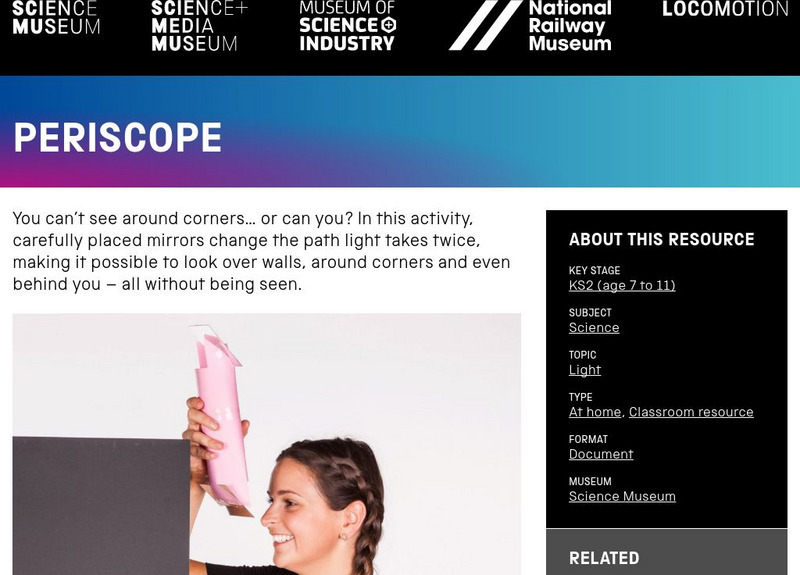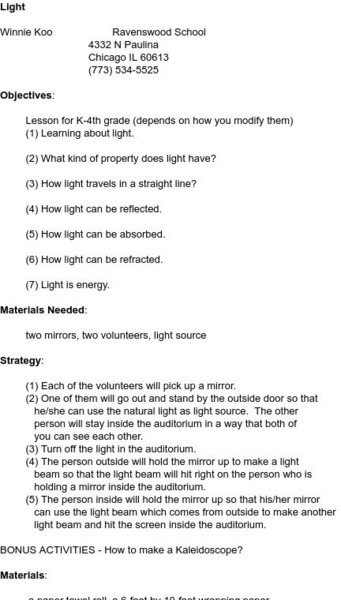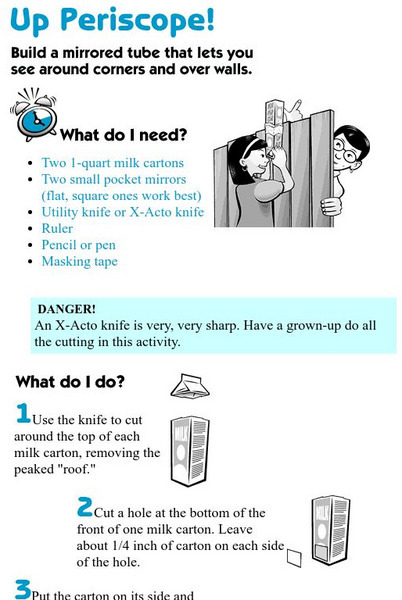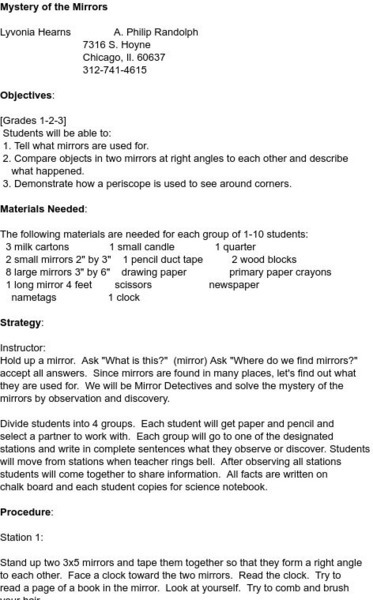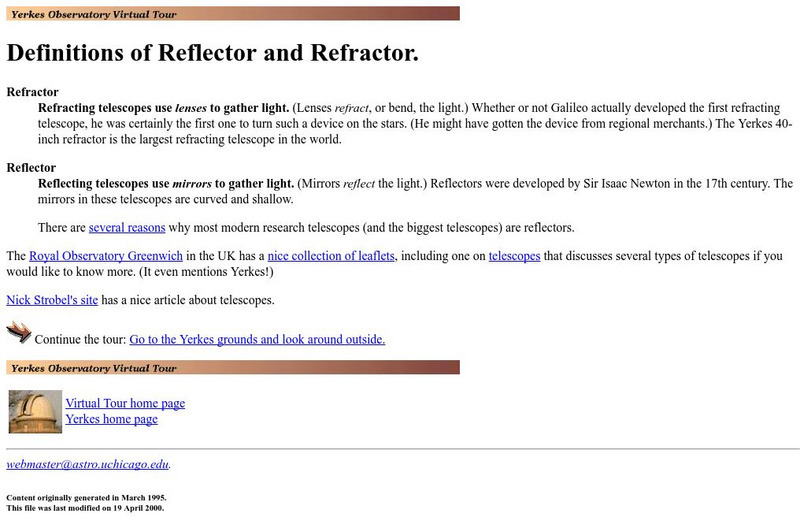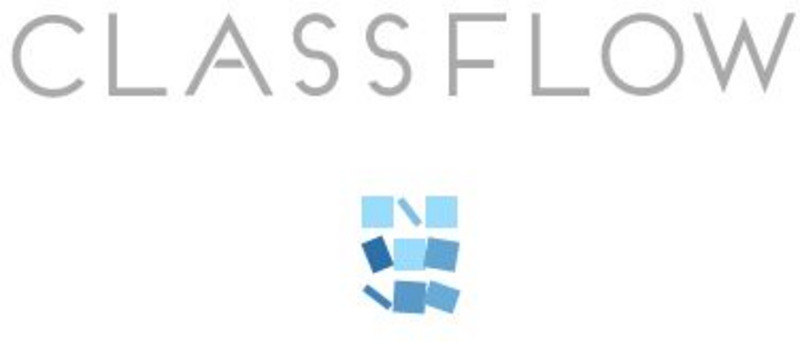Physics Classroom
The Physics Classroom: Reflection/ray Model of Light: The Mirror Equation Convex
While a ray diagram may help one determine the approximate location and size of the image, it will not provide numerical information about image distance and image size. To obtain this, students are introduced to the Mirror Equation and...
Physics Classroom
The Physics Classroom: Reflection/ray Model of Light: Ray Diagrams Convex
Students learn two rules of reflection as it has to do with convex mirrors. These two rules will greatly simplify the task of determining the image locations for objects placed in front of convex mirrors.
Physics Classroom
The Physics Classroom: Reflection/ray Model of Light: Convex Mirror Images
Students explore three different ray diagrams for objects positioned at different locations along the principal axis in a convex mirror.
Khan Academy
Khan Academy: A Mirror in an Operating Room
This passage will test your knowledge on spherical mirrors.
TeachEngineering
Teach Engineering: Construct It!
Students use simple household materials, such as PVC piping and compact mirrors, to construct models of laser-based security systems. The protected object (a "mummified troll" or another treasure of your choosing) is placed "on display"...
Physics Classroom
The Physics Classroom: Reflection and the Ray Model of Light: Ray Diagrams
This illustrated physics tutorial serves as a step-by-step guide to drawing ray diagrams. It includes an opportunity for students to practice and check their answers.
My Science Site
Optics: Energy and Control [Pdf]
A very comprehensive unit including topics such as light and its source, visible sources of light, transparency of objects and much more. Also offers a resource list, blackline masters, and expectation list, expectation summary and a...
Science Museum, London
Science Museum: 360 Periscope
Make a 360 degrees periscope which uses mirrors to reflect light to see around corners.
Science Education Resource Center at Carleton College
Serc: Mn Step: Reflection Race: Exploring Reflection of Light
An interesting and engaging activity where students work in groups with a laser pointer and small mirrors. They must use their knowledge of angles of reflection to bounce the laser beam from mirror to mirror until it hits a target at the...
Physics Classroom
The Physics Classroom: Reflection and Ray Model of Light: Spherical Aberration
An illustrated physics tutorial which explains the spherical aberration, an intrinsic defect with any mirror that takes on the shape of a sphere.
Science and Mathematics Initiative for Learning Enhancement (SMILE)
Smile: Light (K 4)
This site provides two activities that young scholars can do in class. One uses mirrors to reflect light beams whole another is making a kaleidescope.
ClassFlow
Class Flow: Introduction to Light
[Free Registration/Login Required] This flipchart introduces fifth graders to the science of light. Principles such as transparent, translucent, opaque, reflection, and refraction are covered. Concave and convex mirrors and lenses are...
Georgia Department of Education
Ga Virtual Learning: Optics
Students discover how mirrors affect optics in this module through reading informational text, watching animations, and answering self-checking practice questions.
TeachEngineering
Teach Engineering: Security System Design
Middle schoolers apply everything they have learned about light properties and laser technologies to designing, constructing and presenting laser-based security systems that protect the school's mummified troll. In the associated...
Optical Society
Optical Society of America: Optics for Kids: Mirrors and Images
An experiment to investigate how many images appear as the angle between two hinged mirrors is increased. Accompanied by an explanation of what is happening, questions for students to consider, and a link to an article about reflection.
Bill Nye
Bill Nye: Mirror, Mirror
In this tutorial, Bill Nye uses a mirror to help the learner understand how our brain processes images.
Exploratorium
Exploratorium: Science Snacks: Look Into Infinity
In this activity students will create images of images of images that can repeat forever. Students will recreate this effect by setting up two acrylic plastic mirrors.
University of Maryland
Optics Highlights: The Telescope
Part of an anecdotal history of optics and the study of light. Extremely thorough treatment of the invention of the telescope. Includes a short biographical sketch and discusses the work of Isaac Newton which focuses on his contribution...
Exploratorium
Exploratorium: Up Periscope!
Children can look around corners with this homemade periscope. Great instructions at this Exploratorium site on how to build a periscope.
Other
The Disgustoscope
This is a resource to teach optics, while building a modified kaleidoscope that will provide 3-dimensional images.
Science and Mathematics Initiative for Learning Enhancement (SMILE)
Smile: Mystery of the Mirrors (1 3)
This lesson plan from the Illinois Institute of Technology incorporates observation with hands on activity through various stations.
University of Chicago
University of Chicago: Reflector and Refractor
From the Yerkes Observatory Virtual Tour web site. Compares and contrasts reflecting and refracting telescopes. A link from the page leads to a second page which explains why most modern research telescopes are reflecting telescopes.
ClassFlow
Class Flow: How We See Things
[Free Registration/Login Required] In this unit children learn that mirrors and shiny surfaces alter the direction in which light travels and that when they see objects light enters the eye. Children contrast reflection and shadow...
Texas Instruments
Texas Instruments: Finding the Shortest Path
Students discover the shortest distance light travels from an object to the human eye, as the light from the object reflects off a single mirror. In the process they learn about reflection in a line, congruent angles, angle bisectors,...





